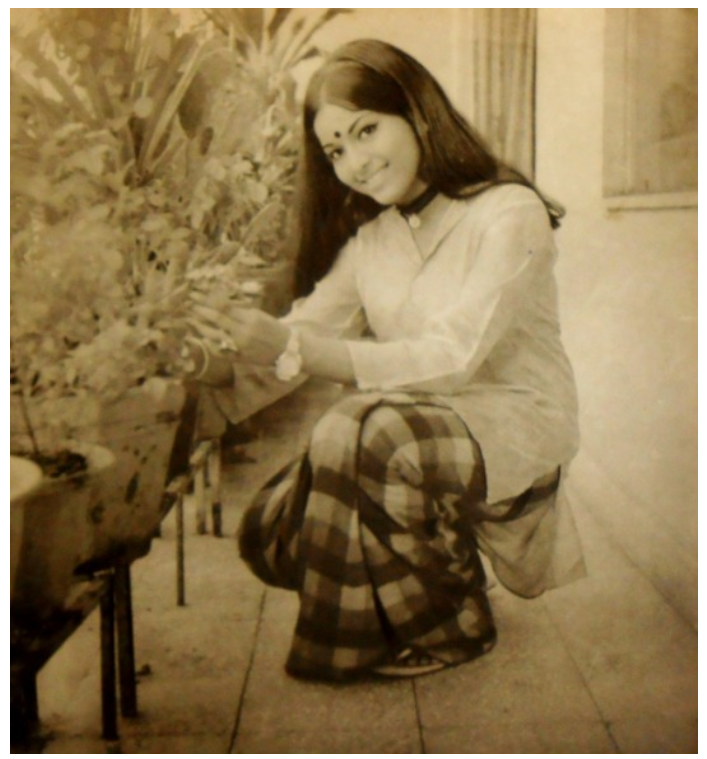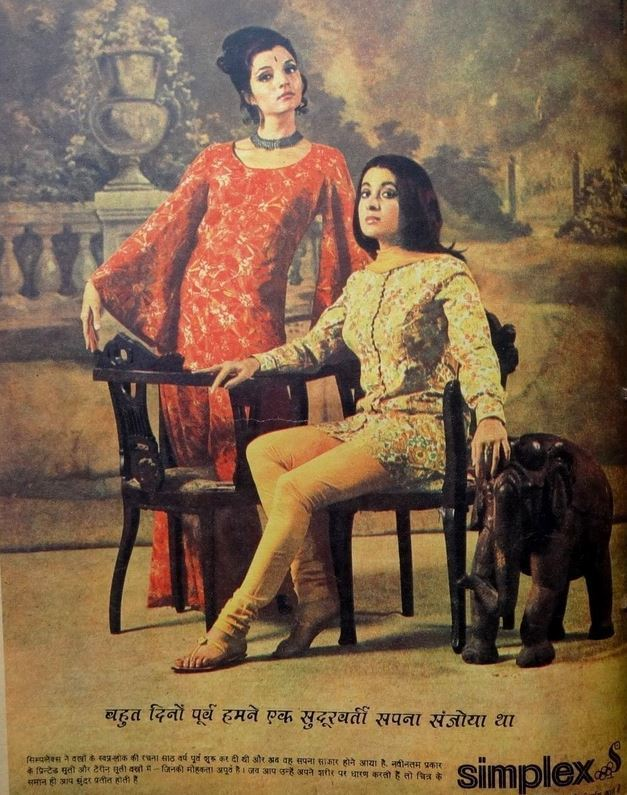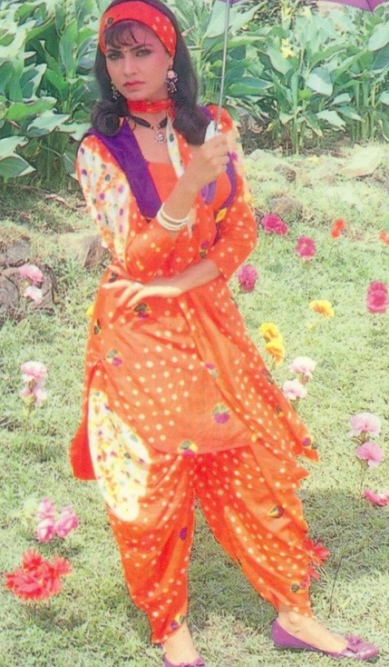NUFS X SOUTH ASIAN SOCIETY

At NUFS we love to celebrate the diversity of fashion and a great way to do this is to look at different cultures. We decided in order to do this we would collaborate with other societies at Newcastle University to create a a joint piece. With the South Asian Society, we looked at how their fashion trends have evolved over the decades and some of the reasons for these changes.
1970s - Salwar kameez, Churidars & Kurtas
Cinema and print media played a major role in popularizing the ‘churidar-kameez’ across South Asia, particularly India and Pakistan. International trends and the British era also played a role in defining the way Indians dressed over the years. The 60s were ruled by heavy chunky ornaments, embroidered saris whereas the 70s saw a lot of bright colours, polka dots, bell-bottoms, and oversized sunglasses. India also went through a lot in terms of defining women’s rights, their own choices, and thus the shift from very understated shy traditional looks to modern bold choices.
1980s - Kaftans, Halters, Maxis & Pant suits
The 80s was the period where fashion was stylish and wearable! The bold colours and artsy prints from the 70s almost vanished, giving way to plain and chic outfits! Whilst at the same time, we also saw decked up dance costumes with heavy jewellery and lots of bright colours.
From chiffon sarees to puffy sleeves, the 80s was the era of impeccable style and glam! Here’s the iconic 80s Bollywood fashion!
The 80s Bollywood fashion was elegant and natural. The bold 70s outfits gave way to wearable attire. A line was beginning to get drawn between casual clothing, decked-up wedding fashion and glittery stage-show outfits.
Anarkalis, Glitter Costumes, Double Braids, Hair Accessories, Exaggerated Gold Jewellery, Printed Sarees, Belted Midi Dresses, Well-Fitted Salwar Sets.
An embroidered black blazer with a saree, confidently emanated a ladylike class. blazers in earthy shades like tan, beige and black were much more popular back then than is the case now. sarees come with a pre-stitched blazer and jackets in contrasting shades.
Puffed sleeves, shoulder pads, chunky accessories and an overdose of metallic colours made the Bollywood fashion of the 1980s look gaudy and over the top. At least retrospectively to how it was before! it is also remembered as the decade that ushered in sheer materials such as chiffon to popularise a more sensual look.
1990s - Redux clothing
This decade had a lot of geometric patterns stitched together, ruched kurtas, large floral motifs, etc.
The 1990s saw the arrival of floral dresses, full-sleeved salwar kameez in various styles, and long skirts. The latter part of the decade brought in short dresses, sportswear or ‘athleisure’, crop tops, and halter necks.
2000s - Dynamic shift to Crop tops, Denim and Prints
The year 2000 ushered in a dynamic shift in the way Indian women dressed and presented themselves. each piece of clothing word by leading actresses became bolder and more sensual, reflecting the fact that Indian women had begun to feel more comfortable in their own skin, and had no qualms in admitting the same.
The beginning of the decade was all about crop tops, low waist denims, skirts and shorts, halter neck tops, bandeaus in tropical prints, asymmetrical tops and maxi skirts in paisley prints.
2010-2020s - Salwar kameez, Lehengas & Churidars
Salwar kameez, lehengas and churidars with a modern touch of embroidery and colour schemes.
In modern times, men’s fashion has also evolved. A fusion of old-style dhoti with vests or jackets. The style in Desi with an Urbane twist.
South Asian fashion with a modern spirit, includes cropped tops with flared trousers or maxi skirts.
Sources:
https://www.pure-elegance.com/blogs/fashion-files/1980-s-fashion-trends-are-back-and-how
https://vintageindianclothing.com/2012/06/08/432/
https://yourstory.com/2017/03/fascinating-evolution-indian-womens-fashion-years
https://strandofsilk.com/indian-fashion-blog/stylish-thoughts/90s-trends-have-made-massive-come-back
https://yourstory.com/2017/03/fascinating-evolution-indian-womens-fashion-years
https://www.fnpgardens.com/blog/style-guide-modern-indian-groom/
https://nuvomagazine.com/daily-edit/mani-jassal-south-asian-fashion-with-modern-spirit
http://thebigfatindianwedding.com/2015/the-ultimate-south-asian-style-guide-mens-jackets


















